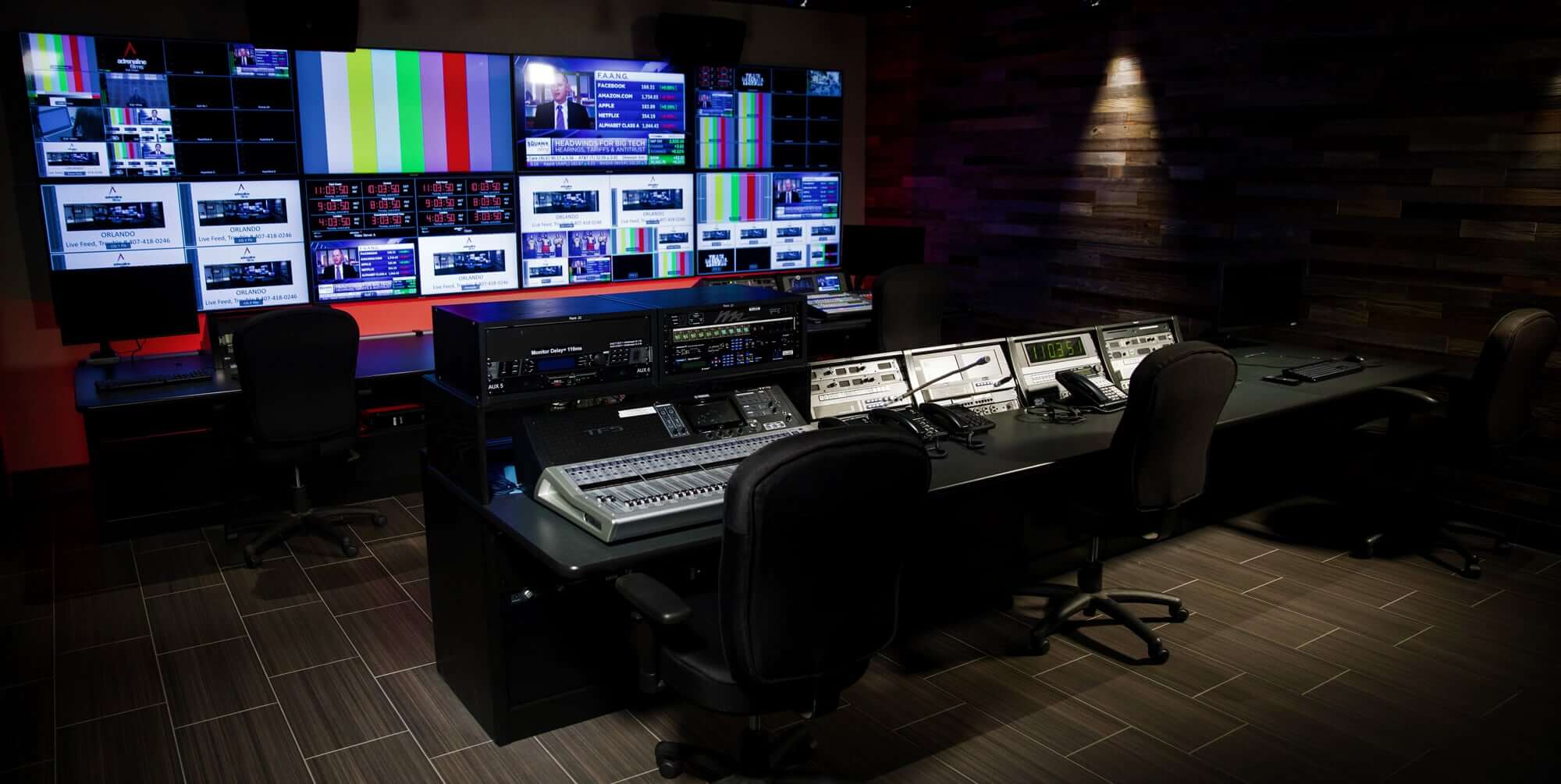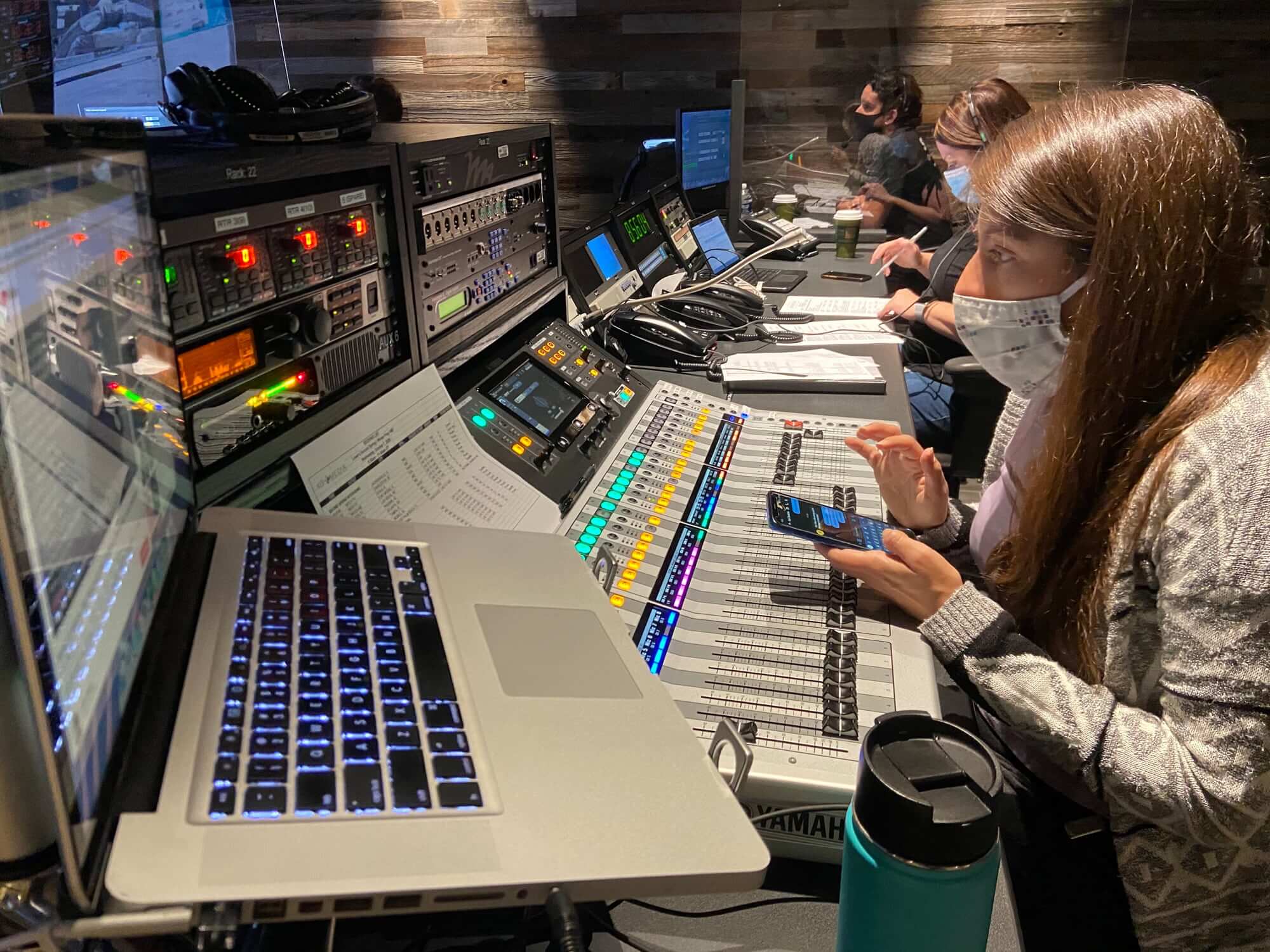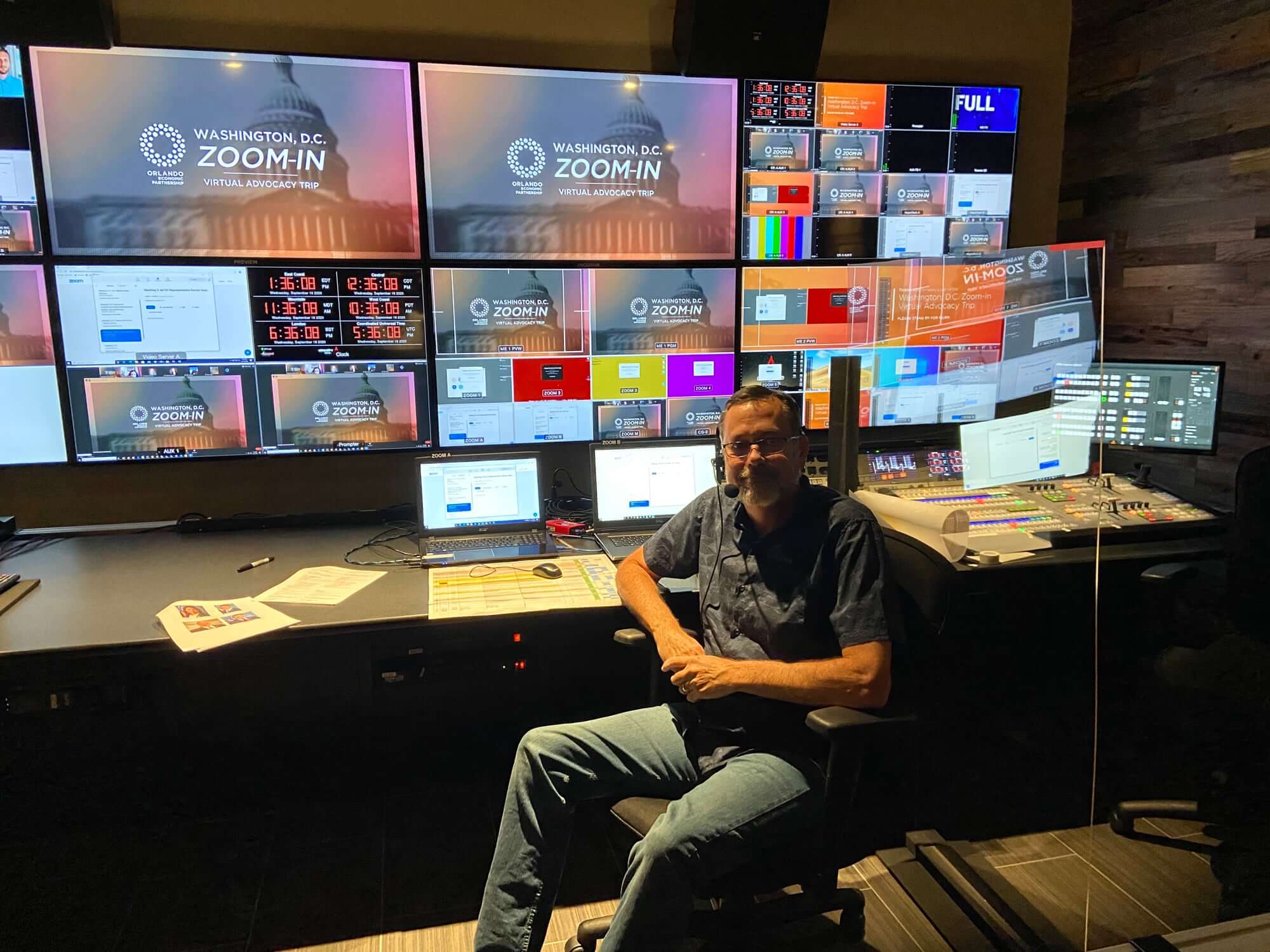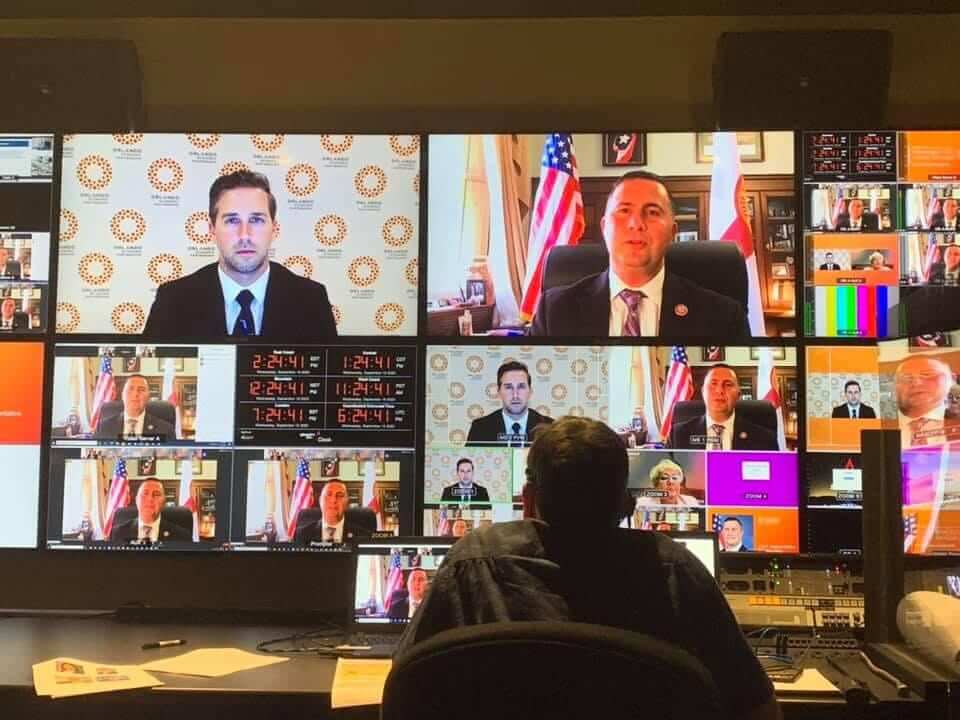Adrenaline Films drives virtual conference production with Video Transport

Founded in 1991, Adrenaline Films is a video production company that operates a 25,000 square feet facility in Orlando, Florida and provides video production and post-production services to major entertainment, media and technology companies like Universal Orlando Resort, CNN, NBC, Fox News, Amazon and Siemens. We had a great conversation with Tim Bartlett, the company’s VP & General Manager, about how Video Transport was used in a recent virtual conference production.
I think your company is a disrupter, kind of the Uber of video transport.
A high-end computer company came in with a request to produce their annual meeting virtually. The production was not live but included 4 days of remote contribution with multiple participants interacting with each other in real time. Adrenaline Films needed a contribution solution that was higher quality than Zoom and could easily be brought out via SDI and switched in a physical switcher – this was the key criteria that steered the team towards using Video Transport.
The following elements were involved:
- a 1 Gbps fiber optic connection (up and down);
- a Windows computer (made by BOXX) with an Nvidia GeForce GTX 1080 graphics card, a Blackmagic Design DeckLink Quad 2 (8 SDI outputs) and a Blackmagic Design DeckLink Mini Recorder SDI input card;
- a Blackmagic ATEM 2 M/E Production Studio 4K switcher;
- Blackmagic Design HyperDeck Studio recorders;
- another Windows computer running Zoom;
- a 10-channel Video Transport license.

7 or 8 guests from different locations around the world (Los Angeles, Denver, Chicago, New York, Brussels and London) would contribute their camera feeds via the VT guest link to the BOXX computer running Video Transport. In order for the contribution feeds to have a professional look, portable kits were delivered to all participants – consisting of cameras, computers, lighting and green screens. These independent video feeds were output via SDI and routed into the ATEM switcher; they were also sent to HyperDeck Studio recorders to be ISO recorded for later editing.
They were sending us a 1080 signal that looked great.
In parallel, Zoom was used to host another conference with participants from the company’s legal and marketing teams, who also connected from various parts of the world to be part of this production session. Zoom ran on a separate computer and generated another feed for the ATEM switcher.

Each feed could be keyed over individual graphics and returned back to the speaker via the Blackmagic SDI input card on the BOXX computer and the VT Guest Link, but not just that:
I set up a nine-split multiviewer with the different cameras and I included the Zoom feed in that nine-split so that the people on the VT web links could see the people on Zoom and talk to them.
The output of the ATEM switcher was fed to a Blackmagic Web Presenter, which showed up as a webcam in Zoom.
We could change what we were sending to the Zoom call because it was hooked to our switcher. We could send them a multi-split, we could send them an individual feed, we could switch it like a TV show.
The new mix-minus feature was instrumental for this particular production. A proper audio setup for a video conference involves providing each party with an individual audio feed – one that contains audio from all participants but himself. This ensures that the speaker does not hear an “echo” of his own voice. Integrating 8 remote guests via VT and also Zoom would require at least 9 independent mix-minus audio feeds to be set up manually – this can be tricky to maintain, not to mention the audio equipment needed.

Luckily the new Video Transport feature of the integrated mix-minus was released right on time and became crucial for us to pull this off using VT. We only had to create two mix-minuses between two groups connected over VT and Zoom instead of 9 audio feeds. The rest of the job to create individual mix-minuses for each guest was automatically handled by VT. Also we created our own multi-view split screens to return to participants that also integrated the Zoom contributors. All parties had video and audio two-way interactions.
Tim’s team also integrated their RTS IFB system into the mix-minus signal flow so that they could talk to all parties together or to each party separately.
Adrenaline Films also deploys Video Transport in more straightforward remote production environments – such as with creative teams and performing arts centers, who need to keep running shows, but avoid bringing people into close proximity. To do this, they would set up 4 or 5 cameras at the venue, use Video Transport to bring the raw feeds into the facility, switch the show and send the master out to a distribution platform. This renders the benefit of sending fewer people to the venue and spending less time setting up.
The flypack takes up a lot of space and, quite frankly, takes up a day to set up and test and make sure it's all working.
The flypack is replaced by the powerful Dell Precision 7740 laptop with an Nvidia Quadro RTX 3000 graphics card – enough to encode 5 video feeds in 1080p and ship them to the control room via Video Transport.
It’s a way to send high quality video back and forth using resources that are already in place – without a huge cost of entry. I think you're different in that you require a lot less hardware infrastructure.
Tim is also impressed by the capability of Video Transport to support a variety of workflows and use cases:
The fact that your product has those different modules all integrated into the same platform, I think, is really valuable. Today, I can do a web conference. Tomorrow, I can transport 1080 signals from Los Angeles back here… So, remote contribution, multi-camera remote production, monitoring and return feeds – those are all part of one product.
